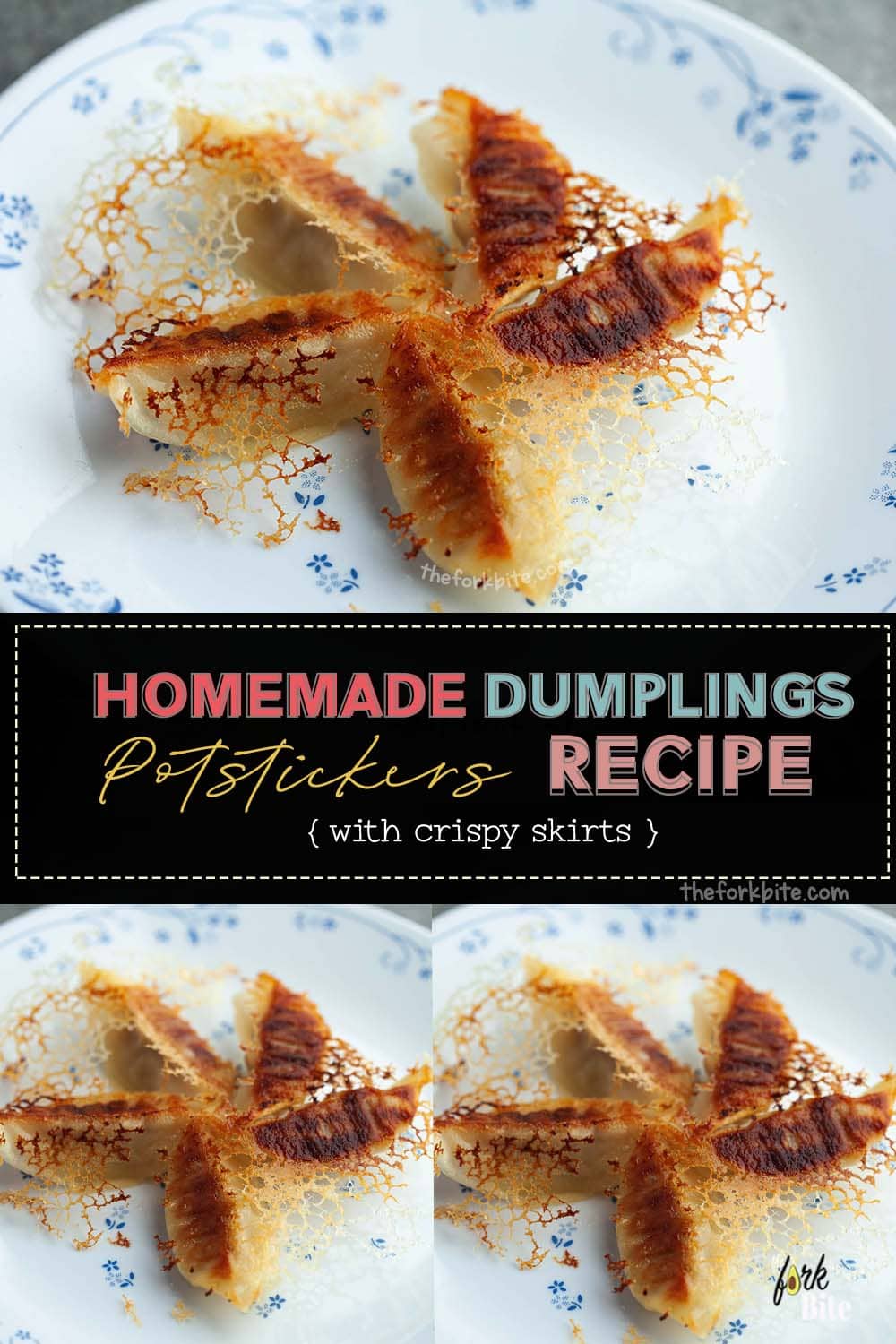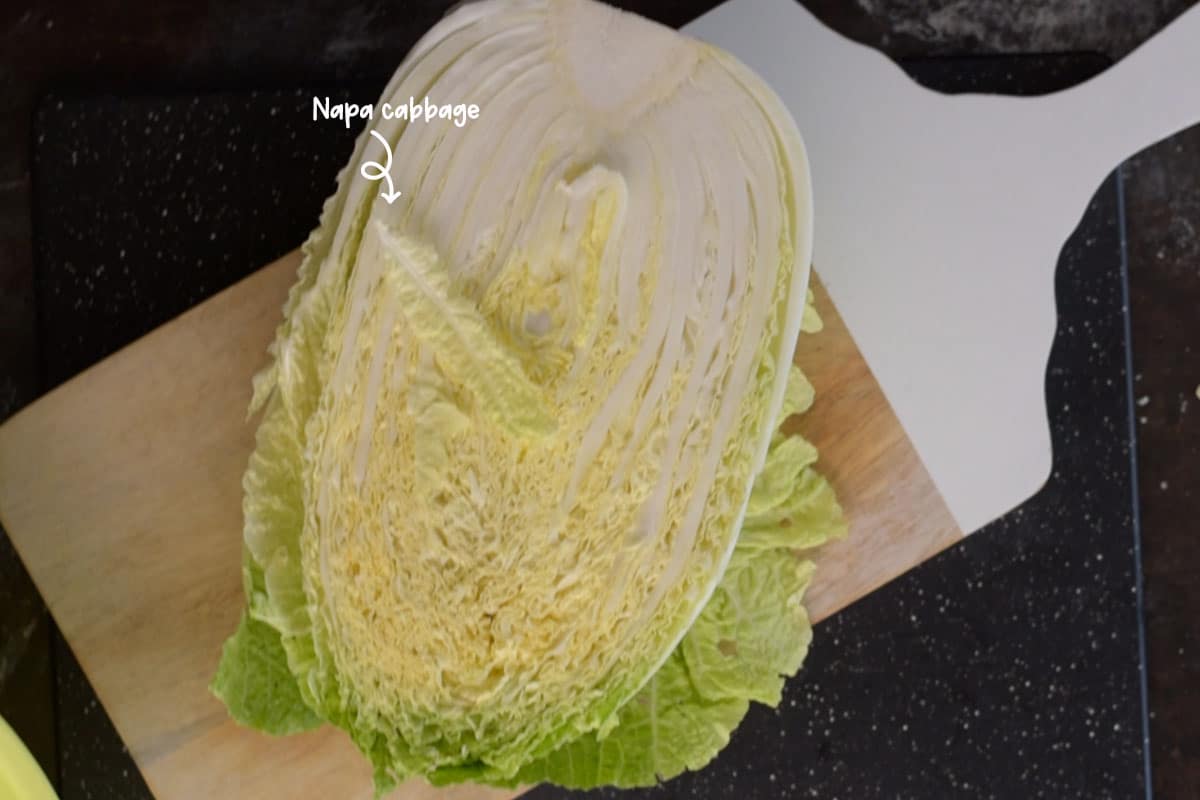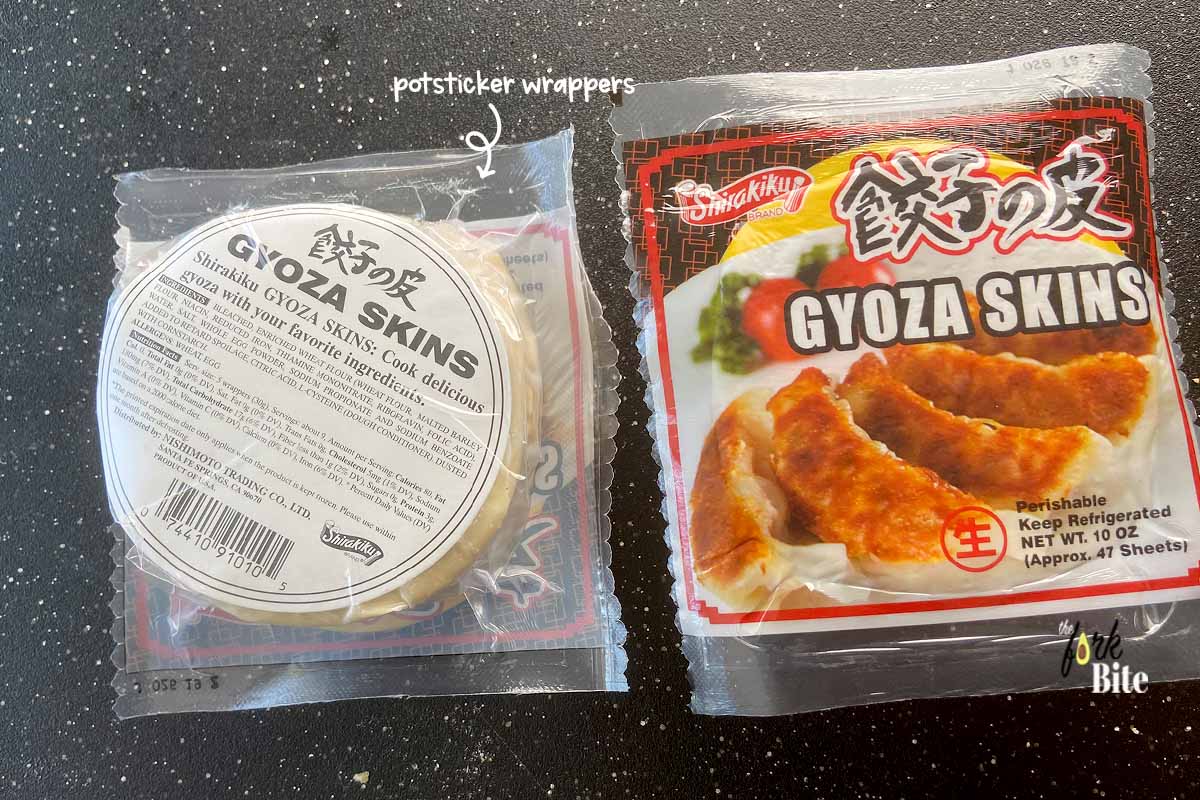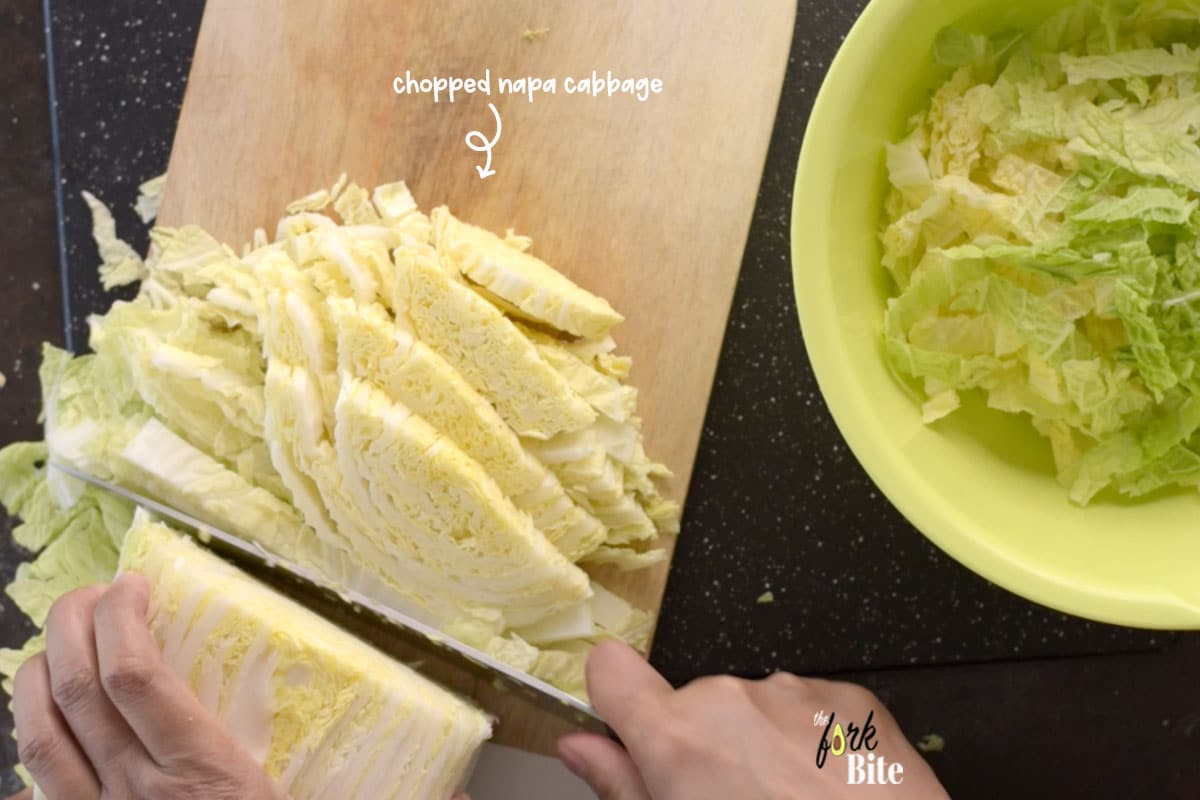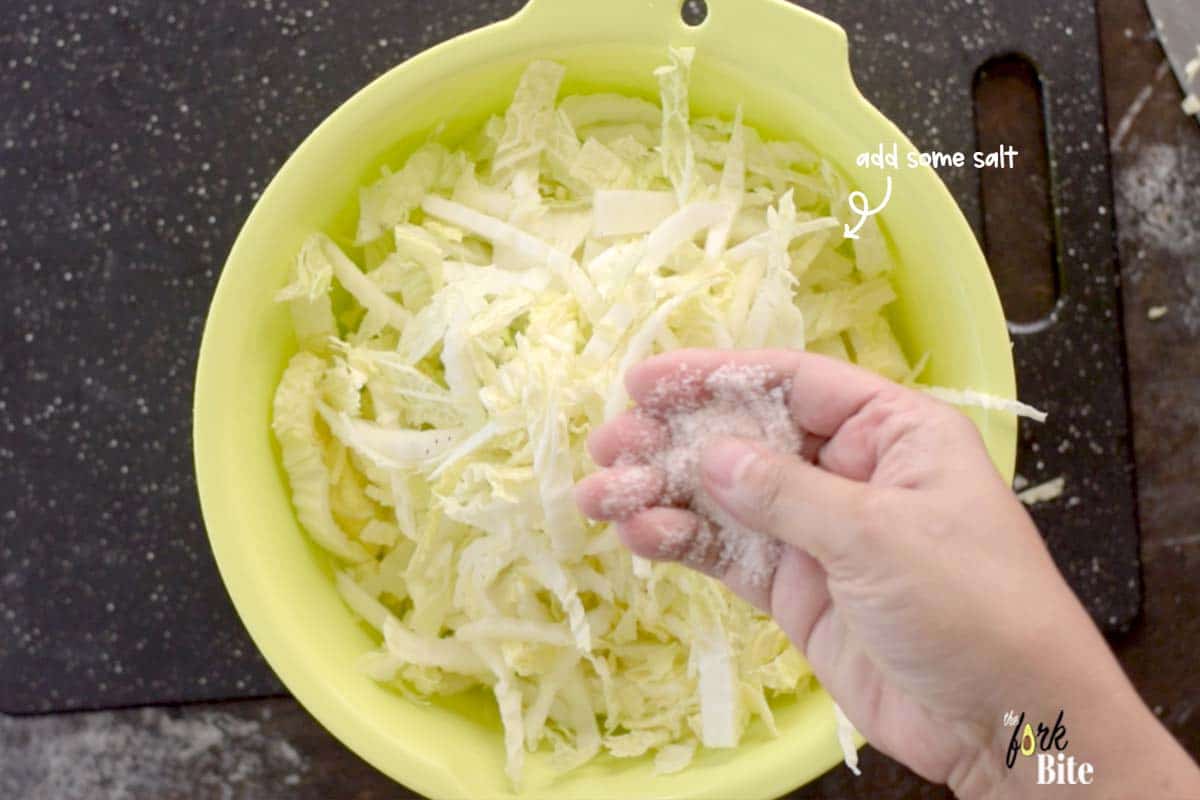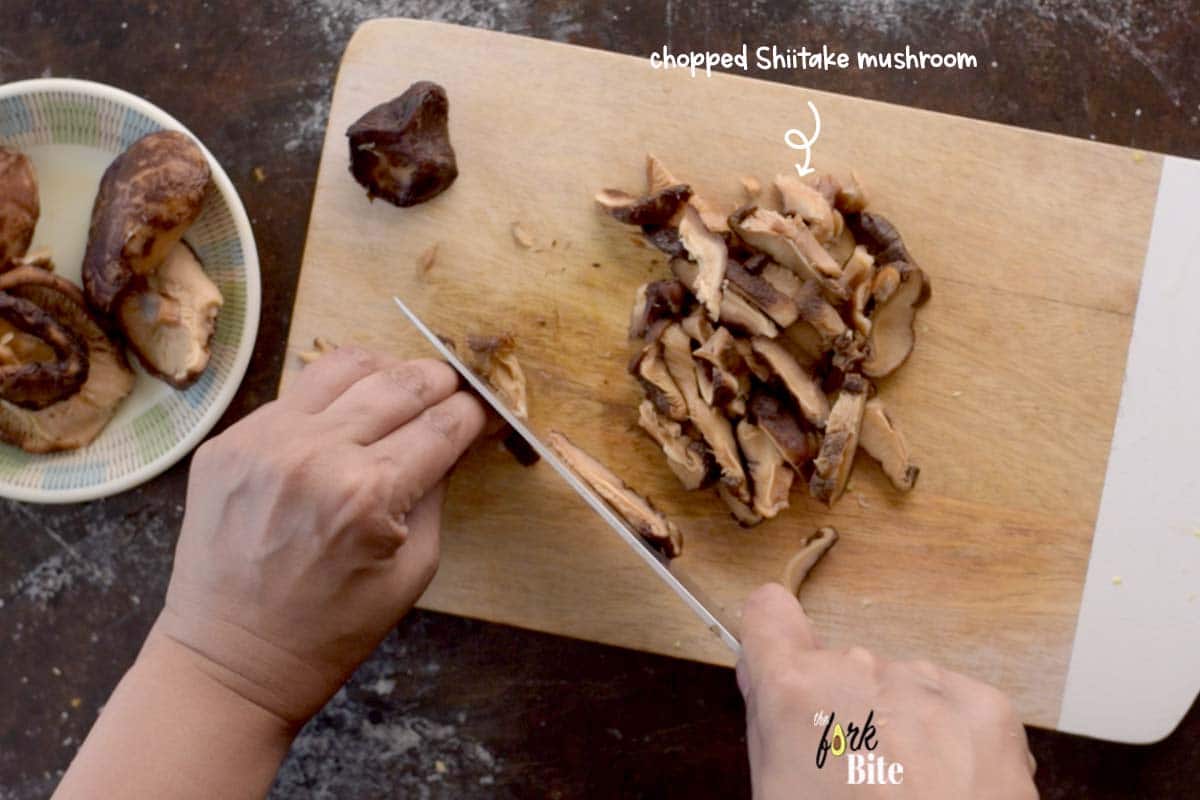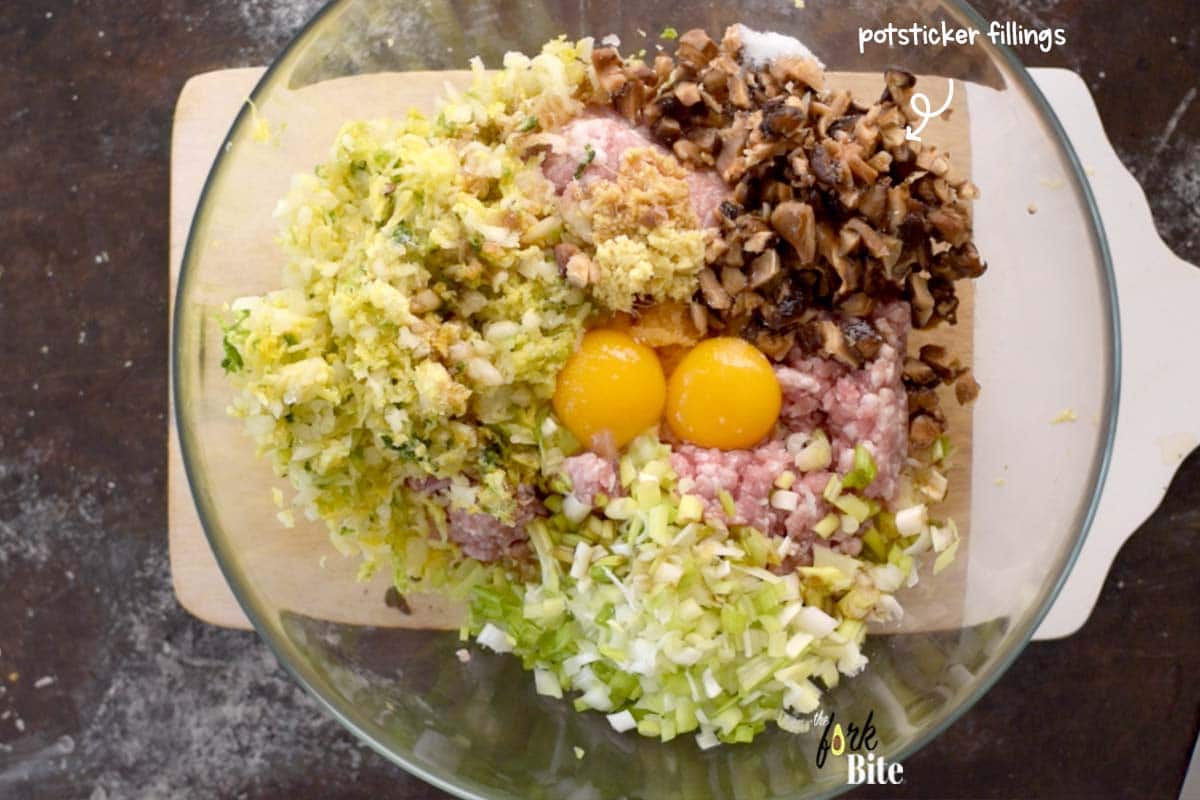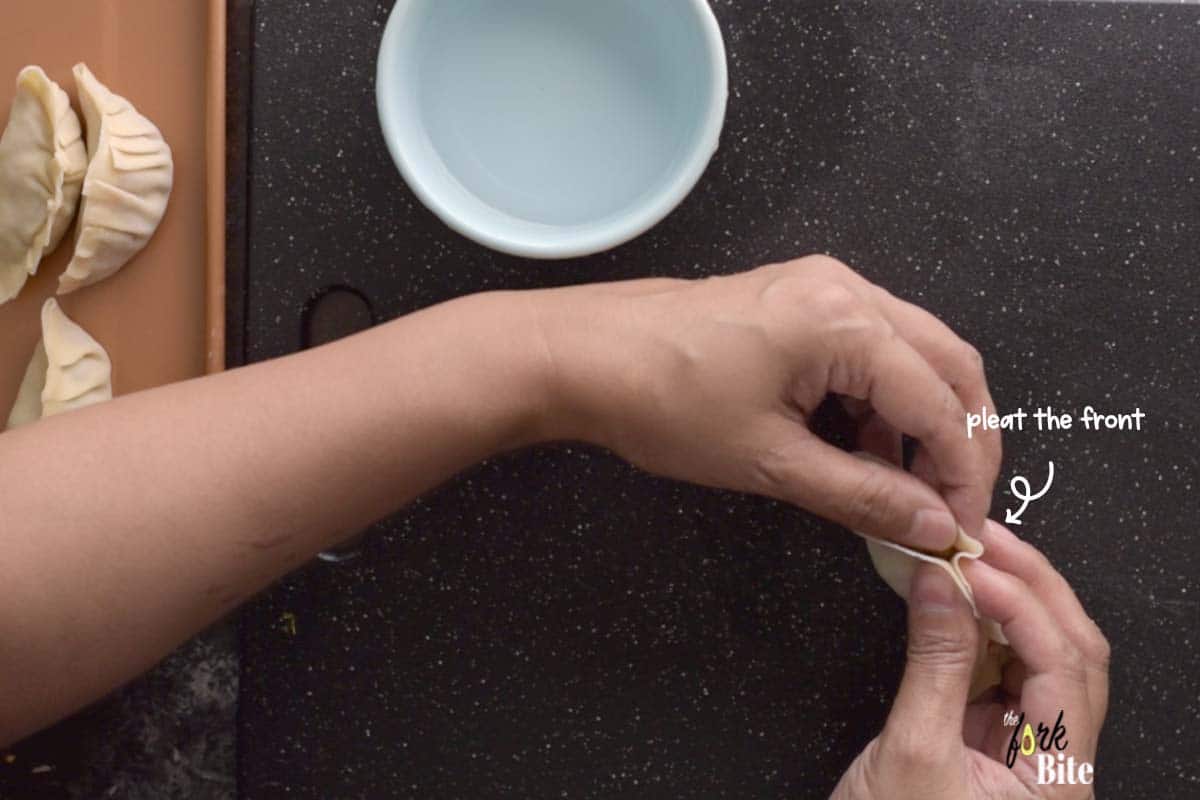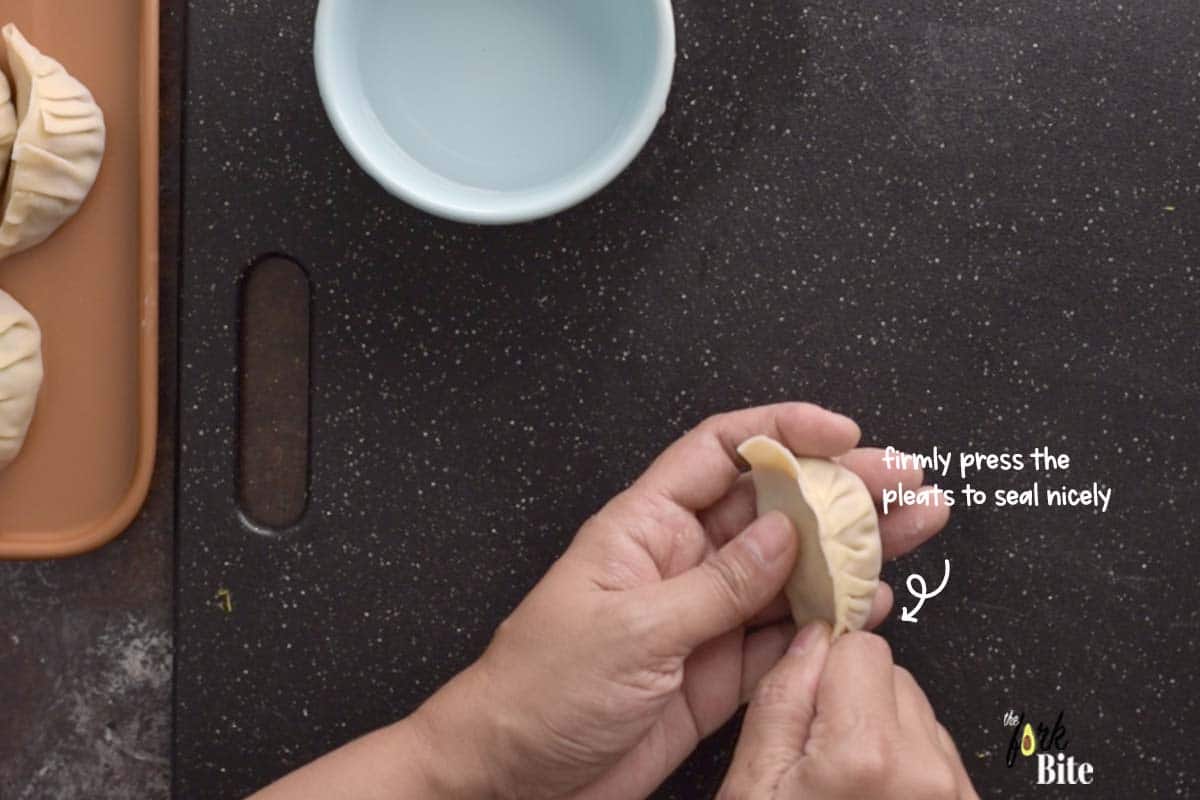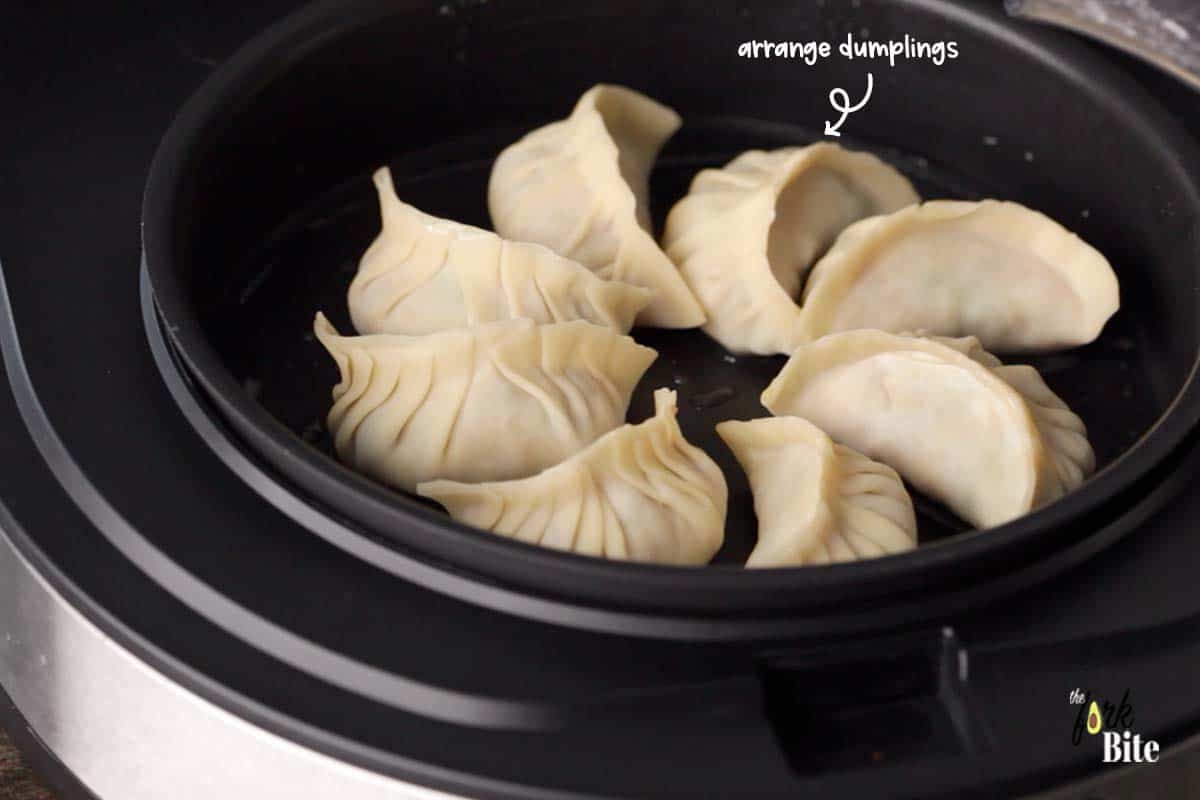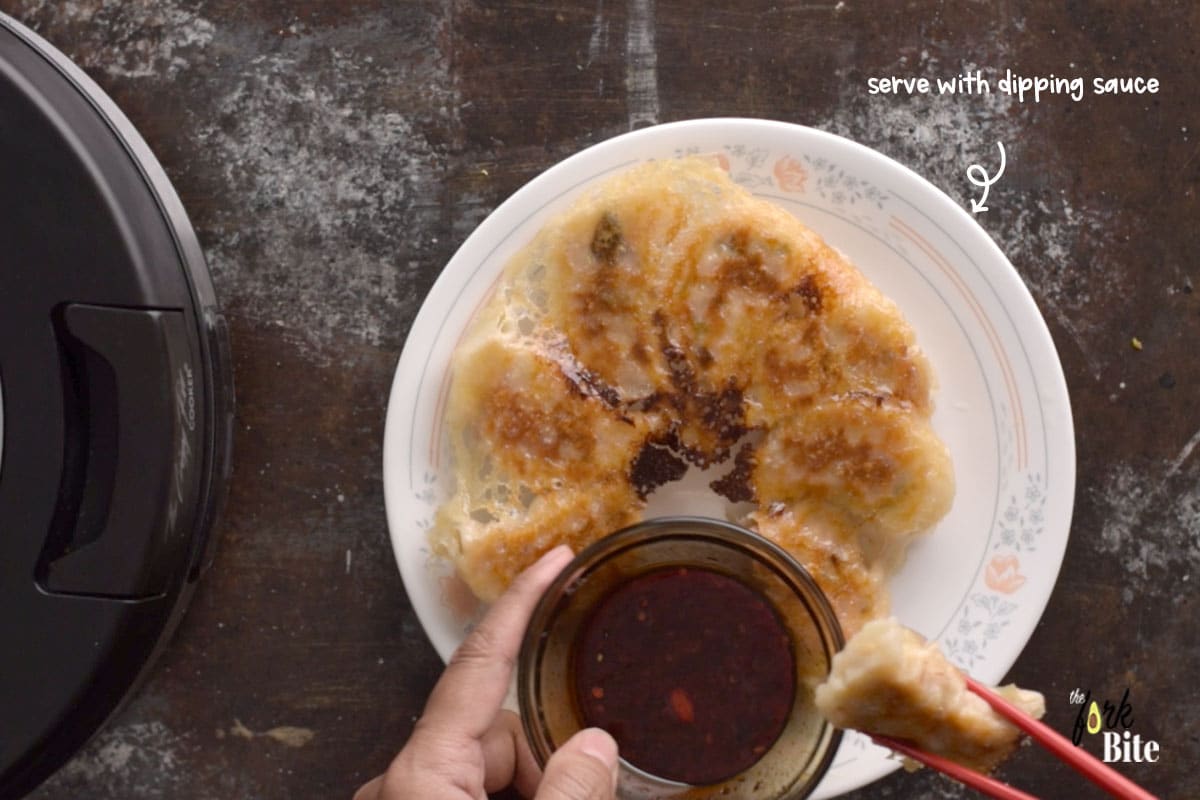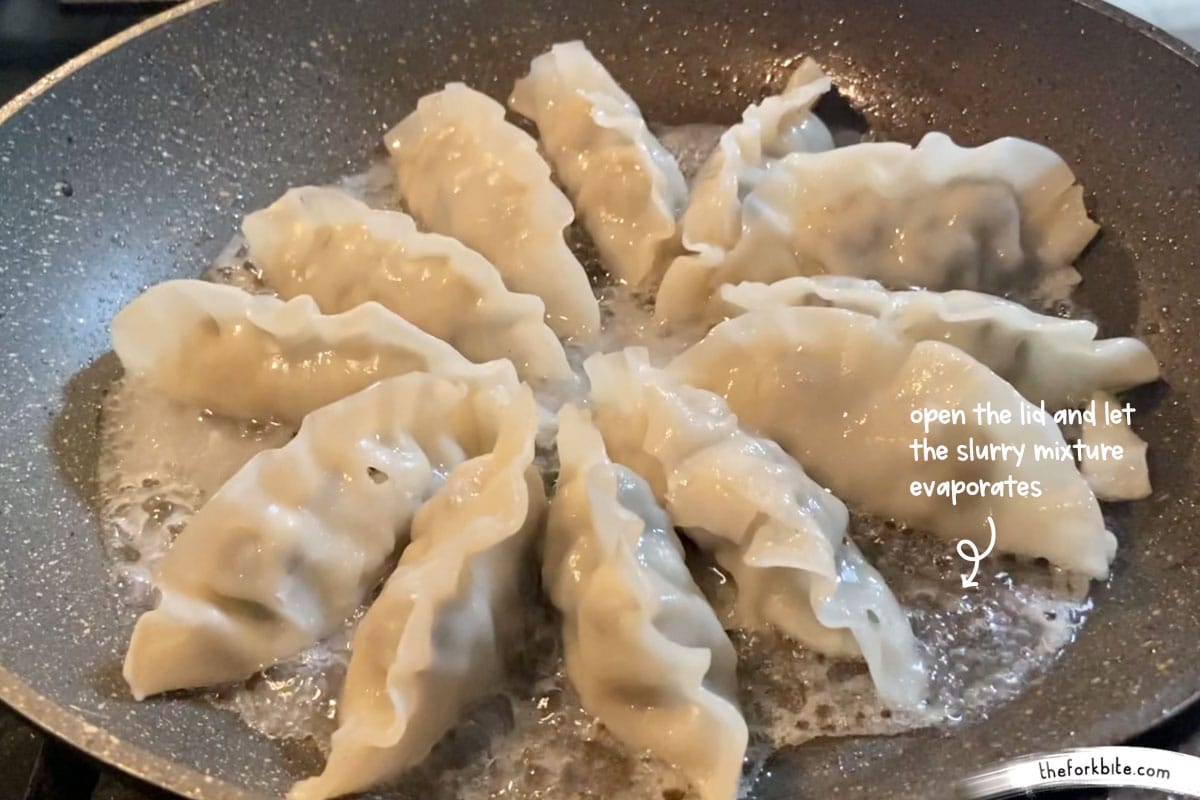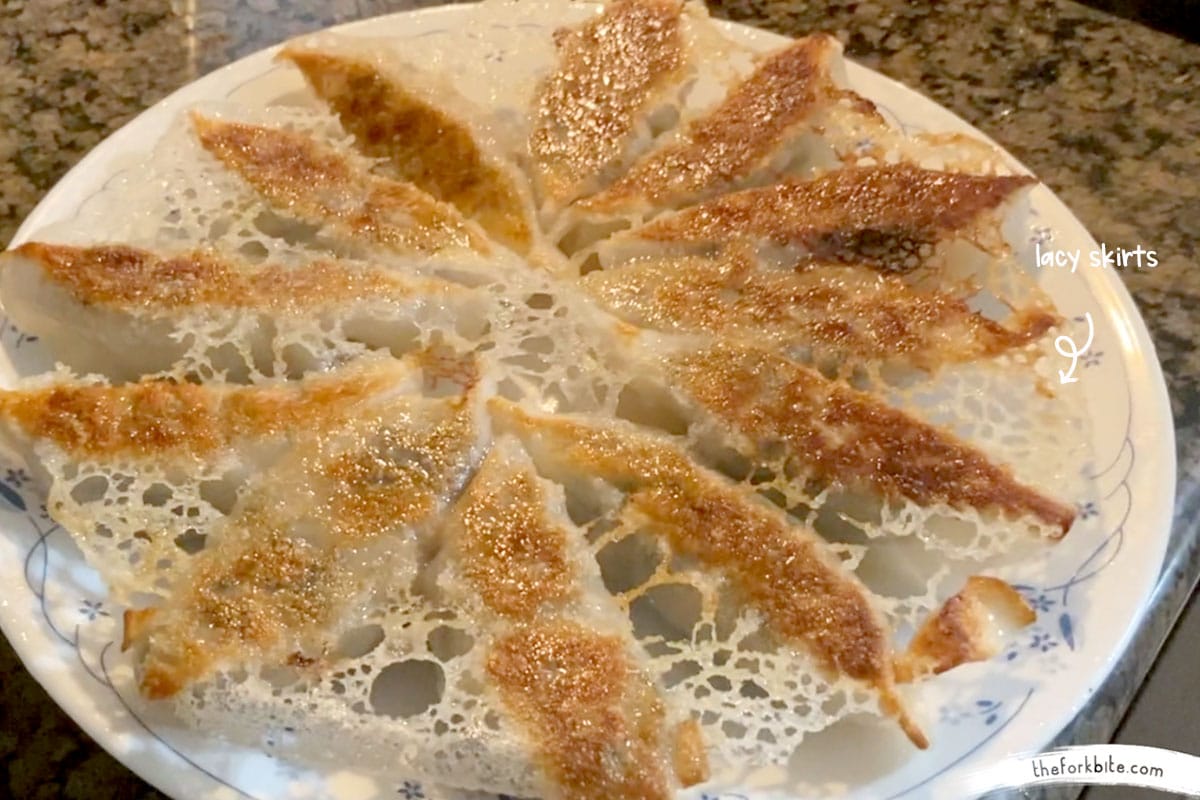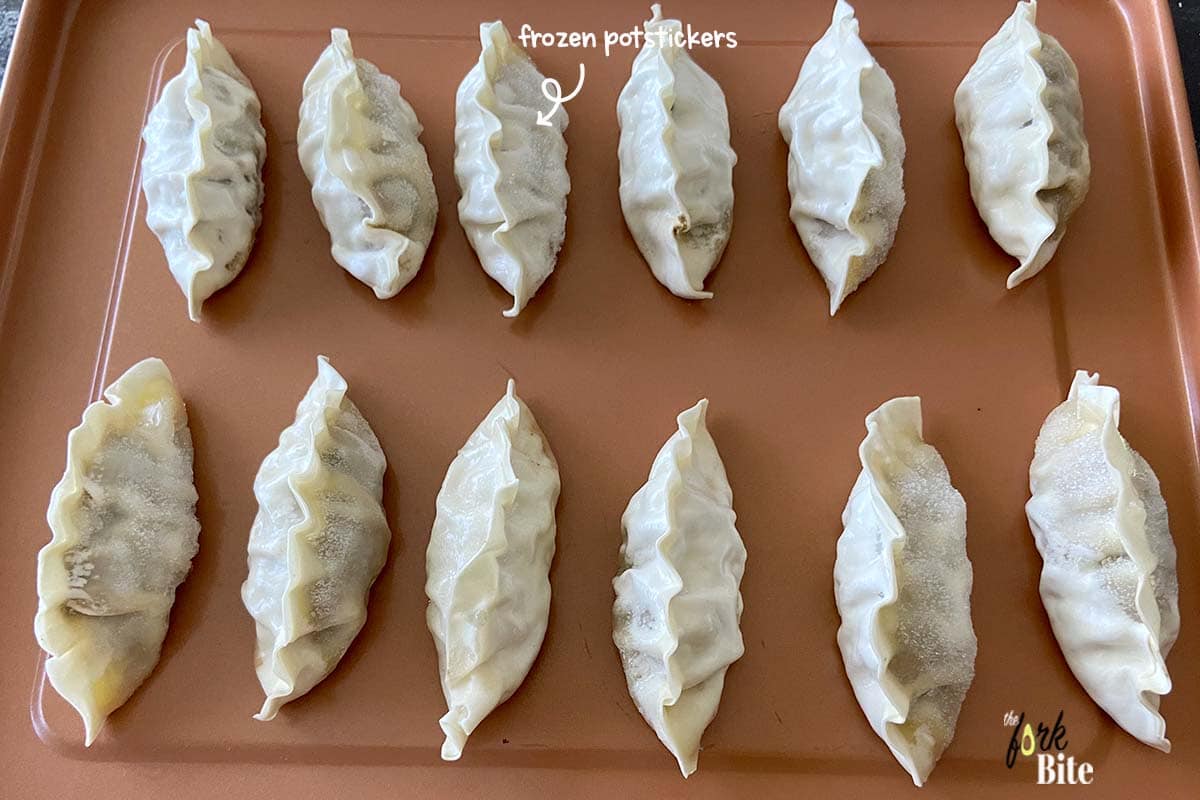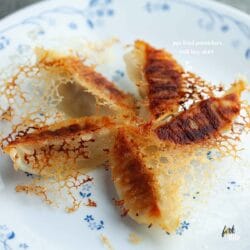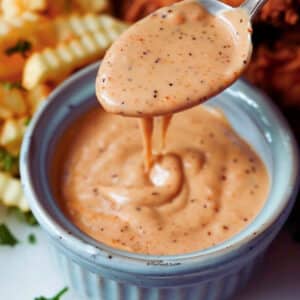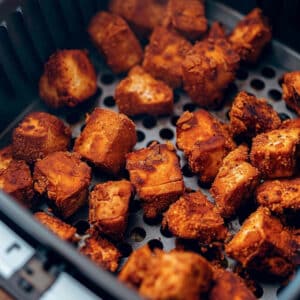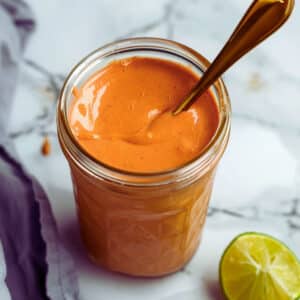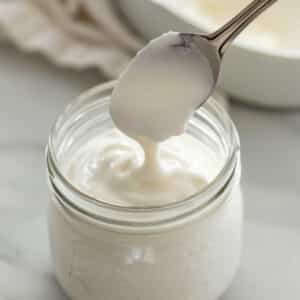If you are a lover of potstickers and are looking for a recipe to try cooking them yourself, you've come to the right place. The recipe I am going to share with you is a sure-fire winner, and once you followed it, you're sure to use it again and again.
I will tell you about the potstickers' delicious filling made from tender pork, cabbage, garlic, ginger, and shitake mushrooms. To get that all-important contrast between a soft, outer top and a crisp, gold-brown base with an evenly cooked, tasty inner, they are steamed first and pan-fried.
Jump to:
You don't always have to stay with pork. You can substitute it with a protein of your choice. Instead of pleating the edges, you can crimp them. Little variations will not detract from the final dish. These little Chinese style dumplings take to freezing like a duck to water, so you can store them and cook them from frozen whenever the fancy takes you.
Potstickers are one of my all-time favorite things to cook. The fact that you can make them and freeze them, ready for reheating as and when you need to, makes them the perfect thing to put on any menu, regardless of the occasion.
What are potstickers?
If you eat out in Chinese restaurants, you may well have come across potstickers on the menu. You may even have tried them. If you haven't, you could be wondering what they are.
The word "potstickers" describes a steamed and fried Chinese dumpling. Typically, they are formed with round wrappers, the bottoms of which are served crisp, while the stuffing on the inside remains tender and moist.
Once formed, you can pleat the edges to seal in the filling, so it is watertight. You don't have to pleat them. If you are not sure how to do that, you can fold them in half and crimp around the edges as an alternative.
The thing that separates potstickers from other types of Asian dumplings is the way they are cooked.
Initially, you lightly pan-fry them in a little oil, until the bottoms are lightly brown. You then add water to the pan, cover, and steam until the stuffing is cooked all the way through. Then uncover the pan and continue to fry until the bottoms become nice and crisp.
This cooking method ensures the potsticker's fillings remain moist. That's all there is to it.
What are potstickers made of?
You can stuff potstickers with a variety of fillings. Typically, they are filled with minced meat and veggies, including cabbage, garlic, ginger, mushrooms, and onions. In China, the traditional filling is a combination of ground pork with vegetables.
You can enhance the flavor with rice wine or rice wine vinegar, sesame oil, soy sauce, and a little Asian chili sauce. Another flavor-enhancing trick is to cook the dumplings in chicken broth rather than water.
Admittedly, there are quite a few ingredients, so using a food processor to chop them up will save time. All you have to do is throw the ingredients into the processor and pulse them until they are the desired consistency.
Watch the video
Get these ingredients
1 Napa cabbage
This type of cabbage will provide you with the most authentic flavor as it is not as crispy as ordinary green cabbage. But if you're in a tight corner, you can get away with green cabbage or possibly coleslaw.
2 Shiitake mushrooms
Whatever you do, don't rinse the mushrooms. If you do, they will absorb water and make your filling too wet. You'll end up with soggy potstickers. Clean the mushrooms by wiping them with a damp paper towel. Shiitake mushrooms are best because they have a beautiful, earthy, umami taste. If you can't get hold of any, you can use other types or even leave them out altogether. I used dried mushrooms for this recipe, all you have to do is re-hydrate them in hot water for 15 minutes.
3 Ground pork
It's best not to use the best, lean pork. You want your filling to be nice and moist, so mince some fattier cuts such as pork belly or shoulder. To cut down on work, why not purchase ready ground lean pork and add a tablespoon of veg oil to give it some extra moisture?
4 Egg yolk
You don't need the whole egg - just the yolk. If you use a whole egg, the filling will get too wet. The yolk only is sufficient to add a little moisture and bind the ingredients together.
5 Soy sauce
I prefer to use light soy sauce as it is not as salty as its dark counterpart.
6 Green onions
Green onions are best because they soften so well - much better than white or yellow variants or shallots, which, because they remain firmer, have too strong a taste.
7 Minced Ginger
Add about an inch of ginger root, finely mince, or grate them. Or you can throw the ginger into a food processor together with the other ingredients. So, you don't need to worry about mincing or grating it.
8 Garlic
Peel some cloves of garlic and finely chop or you throw them whole into the food processor.
9 Rice vinegar
Use an unseasoned one to avoid over-salting.
10 Rice cooking wine
Yes, you need both vinegar and cooking wine. The vinegar gives you an acidic hit, but the cooking wine adds an element of sweetness and depth. If you can't get rice wine, you can either use dry sherry or omit the wine altogether.
11 Sesame oil
Use toasted sesame oil if you can. Regular will do if necessary.
12 Asian chili sauce
Don't worry. It won't make everything too sticky as you only need a small amount. It will nonetheless add great flavor.
13 Chicken broth:
This is optional. You can use ordinary water, but chicken broth adds a whole new dimension to the taste of the potstickers. The dumplings absorb the broth making the outers almost as tasty as the inners.
Variations
It doesn't have to be pork. If you fancy some other type of protein, so be it - give it a try. The only thing I would say is to use something that has the right texture so you can use it in the correct ratio to produce a nice, moist filling.
You must also bear in mind that the more fat the protein contains, the wetter the stuffing will be. If you use some of the suggestions shown below, you might find them a little too dry. To get around that, you can always add one or two tablespoons of vegetable oil, or if you don't mind them being a little drier than the pork ones, leave the oil out.
-
- Chicken potstickers: Use minced chicken instead of minced pork.
- Turkey potstickers: Change the ground pork for ground turkey.
- Shrimp potstickers: Substitute finely chopped uncooked shrimp for the ground pork. One word of warning. If you are going to freeze shrimp potstickers, do not use thawed, frozen shrimp to make them. You must never refreeze seafood.
Potstickers wrappers
Potstickers are made using Asian dumpling wrappers, which, in the stores, are sold as dumpling skins or potstickers or gyoza wrappers. They are made from wheat flour mixed with water to form a dough, which is then thinly rolled out.
Stores that do carry these types of wrappers keep them their refrigerated sections. If they are not in plain sight, it's worth asking an assistant if it does stock them. If you draw a blank, you can try looking in an Asian market or store if there is one near you. Don't forget. As an alternative, you can search for wonton wrappers.
Can I use Wonton wrappers for potstickers?
As just suggested, you can use wonton wrappers if necessary. You will need to cut them into 3.5-inch diameter circles, with a cookie cutter or similar. If all else fails, find an object with the right diameter (or close to) and use it as a guide to cut with a pizza cutter.
One quick tip.
If you do have to cut wonton wrappers, cut several together to save time. They tend to dry out quickly, so as soon as you've cut them, put them into a sealed bag and cover with a damp cloth. Just take them out one at a time to keep the rest moist.
How to make potstickers
Prep the fillings:
-
-
- Chop the napa cabbage. Follow the next step carefully, or your uncooked potstickers will be soggy and will tear as cabbage releases its water content when it cooks.
- Put the chopped cabbage into a bowl together with one teaspoon of salt, and toss. Salt draws the moisture out of vegetables. Let it stand for between 20 and 30 minutes, then squeeze it down several times to take out as much water as possible. Put to one side.
-
-
-
- Roughly chop the mushrooms, garlic, ginger, and green onions and place them into one side of your bowl. On the other side of the bowl, add the egg yolk and give it a little whisk. Now add the shredded cabbage, the ground pork, and the rest of the filling ingredients.
- With your hands, mix the fillings well until everything is evenly combined. Next, cover the bowl with plastic and either freeze for 15 minutes or chill for 30. (You can chill for up to 24 hours if time is an issue). Chilling the filling makes the mixture less wet and also makes the stuffing easier to work with. That way, you won't finish up with soggy potstickers.
-
Assemble
1 Take a baking tray and line it with parchment paper. Also, set aside some damp paper towels (alternatively, a damp cloth) to cover the potstickers and keep the moisture in. Cover your wrappers in plastic wrap and take them singly when you need them. Fill a bowl with some water.
2 Take between two to four wrappers and put one tablespoon of the filling mixture into the middle of EACH wrapper. How many you do at a time depends on how fast you can handle.
3 Wet the end of your finger with water and moisten half the edge of each wrapper. Fold the wrapper in half, making it half-moon-shaped. Pleat or crimp the edges with a fork.
It is essential to ensure that the fillings of each potsticker are properly sealed. To CRIMP: press one-quarter of the length of the fork's tongs into the edges of the dumplings, all the way along to seal the edges.
Put the uncooked, formed potstickers onto a baking tray and cover with damp paper towels or a damp cloth. Repeat until you've formed the whole batch.
How to pleat potstickers
Sealing your potstickers with pleats is not essential, but if you want to impress, it's not complicated. After doing the first one or two, you will soon get the hang of it, and it will be a doddle.
1 To make pleats, you need to fold the wrapper in half, and keeping the back of the premoistened wrapper flat, you pleat the front half and squeeze it tight shut against the back. Yes, you only need to pleat one side.
2 Begin at one end and work your way across to the other. You make one crease on the front side then fold it back, creating a little tuck.
3 Then firmly squeeze the pleat or tuck onto the back edge to make the seal.
4 Repeat across the dumpling until it is entirely sealed, and water cannot get in.
Watch the video on how to pleat dumplings or potstickers
How do you make crispy potstickers or dumplings?
1 Grab a nonstick skillet (one that has a lid), add one tablespoon of vegetable oil, and heat on a medium to high heat setting.
2 Put around 6 or 8 potstickers (or however many conformably fit depending on the diameter) into the skillet, sitting on their flat bottoms, and leave (untouched) until they are cooked to the stage where their bases are lightly gold/brown. It will take approximately two minutes, but keep an eye on them to make sure they don't burn. Lower the heat if necessary.
3 Pour one-third of a cup of chicken broth or the slurry mixture into the skillet and put the lid in place. It will splatter a bit. You can prevent this by taking off the heat for about 30 seconds before you add the broth. Continue to cook for about 3 to 4 minutes in the medium heat or until the wrappers turn translucent and the liquid has been reduced to a thick paste (note: this happens if you are using the slurry mixture).
4 Take the lid off after 3 or 4 minutes or once the dumplings skins look translucent. Turn the heat down to low, let the slurry cook for another one or two minutes, it will start off as a thick paste but as it continues to cook the paste will evaporate and becomes a thin coating until the potstickers' bottoms get crispy.
5 Once cooked to satisfaction, place a plate on top of the skillet and quickly flip the dumplings so the golden brown lacy skirts face up. Make sure to use a plate that is a bit wider than the skillet.
Potstickers or dumplings cook in the stovetop
How to cook potstickers without sticking
To prevent your dumplings from sticking to the pan, make sure the skillet you use is nonstick. If it isn't, you don't stand a snowball's chance in hell. They will stick and tear when you try to get them out - trust me. If you love potstickers and cook them at home, a nonstick skillet is an essential investment.
How to keep potstickers from tearing
1 Covering the wrappers
Keeping the potstickers wrappers in their packaging when they're not in use is essential. If you don't, they will become dry and be much more susceptible to tearing.
2 Taking liquid out of the filling
Salting the cabbage is a must, as is squeezing as much water out after the salting as possible. Leaving too much water in the cabbage will make the wrappers too wet and more prone to tearing.
3 Take out any air
You need to do this as you are pleating or before sealing. Air left in will expand when heated and cause the wrappers to tear.
4 Tightly squeezed pleats
When pinching the pleats closed, make sure there are no holes. If there are, the dumplings will absorb too much liquid as they steam and may tear.
5 Covering the formed potstickers
Once you have formed the dumplings, put them onto a parchment paper sheet, and cover with damp paper towels or cloth to prevent them from drying out.
6 Use a nonstick skillet
I have mentioned this already, but it is fundamental to ensure your potstickers won't stick and tear when you try to take them out of the pan.
Tips for perfect potstickers
To end up with the perfect potstickers, follow the instructions given above to the letter, and note the following:
1 Don't overfill your dumplings
Less is more. Yes, you want to be generous with the amount of stuffing, but you must leave plenty of room to seal them properly.
2 Not too many in the pan at once
You need to be aware that your potstickers will expand as they cook. If they touch each other while cooking, they will stick together. Leave just enough of an air gap around each dumpling to let air circulate so that the potstickers' underside will crisp up.
3 Are the bottoms golden-brown?
It's important to sneak a little look under the potstickers to see how they are browning, or to check if they are cooking too rapidly. Depending on what you discover, modify the cooking time and temperature accordingly.
4 Check for even cooking
You might find that your skillet is cooking unevenly. Sample a few dumplings to check.
5 Check their readiness
Once the chicken broth has disappeared, check a potsticker to see if the pork filling has cooked throughout. If the filling is not properly cooked, add a few more tablespoons of broth and continue to cook. The thickness of the wrapper can affect cooking time.
6 Patience is a virtue
The potsticker bottoms will brown during the first frying process. However, they will only become crisp once all of the broth has evaporated. If they haven't browned to your liking, add a little more vegetable oil, shake the skillet to ensure it is properly distributed, and cook a little more. Your patience will be well rewarded.
Can you make it ahead of time?
Yes, you can, and here is how.
-
- Form your dumplings up as far as the directions given above to the point just before refrigerating.
- Put the uncooked potstickers into an airtight container in one layer. Make sure they are not touching each other. Cut a piece of parchment paper to size to cover the layer and place it on top.
- Then add another single layer of dumplings. As an alternative to an airtight container, you can use a plate and cover with parchment paper. Position the dumplings, so they are not touching and wrap up tight with plastic wrap.
- Keep in the fridge for two days or less, but no longer.
When ready to cook, just follow the instructions already given.
How to reheat cooked potstickers?
Cooked potstickers can be reheated in the microwave. Sadly, the crispy bottoms will disappear. If this is unacceptable, after you've microwaved them, you can pan-fry them in a little oil to re-crisp the undersides.
Can you freeze potstickers?
Yes, you can. Follow these instructions:
-
- Form your dumplings up as far as the directions given above to the point just before refrigerating.
- Place the potstickers on a parchment paper-lined tray and make sure they are not touching each other.
- Wrap the whole thing tightly in plastic wrap and freeze for up to a month. Alternatively, to take up less space your freezer, after freezing them up for two hours, transfer them into a freezer bag.
- They can remain frozen for up to three months.
How do I cook frozen potstickers?
This is how you cook potstickers from frozen. I have a separate post on how to cook frozen potstickers, you can check it here.
- Do not thaw. Cook straight from the freezer. Just be a little careful as ice crystals can splatter when you put the potstickers into the hot oil.
- Follow the instructions already given, but add two extra tablespoons of chicken broth.
- Once the broth has evaporated, see if the dumplings are ready. If they are not, put another tablespoon of broth into the pa, cook for a further minute, and check for readiness.
Related Asian recipes:
Full Recipe
Crispy Gyoza Dumplings Recipe
Pin RecipeEquipments:
- non-stick skillet
Ingredients:
Fillings
- ½ head Napa cabbage
- 1 teaspoon salt
- 7 pcs dried shiitake mushrooms
- 2 egg yolks
- ¾ cup green onions (finely chopped)
- 1 tablespoon ginger paste
- 1 tablespoon garlic (minced)
- 1 lb ground pork (preferably 80% lean 20% fat)
- 1 tablespoon soy sauce
- 1 tablespoon rice wine vinegar
- 1 tablespoon cooking wine (or dry sherry)
- 1 tablespoon sesame oil
- 1 teaspoon chili sauce (optional)
- ¼ teaspoon ground black pepper
Dipping Sauce (optional)
- 2 tablespoon rice vinegar
- 2 tablespoon rice wine
- 1 tablespoon Chili oil
- 1 teaspoon sugar
- 2 tablespoon soy sauce (low sodium)
For Slurry Mixture (for frying 6-8 at a time)
- 1 teaspoon wheat starch (or cornstarch)
- 5 tablespoon water
- ¼ teaspoon vinegar
For the wrappers
- 30 rounds Gyoza wrapper (or potsticker wrapper)
- 1 tablespoon oil
Watch the Video:
Instructions:
Prep the Fillings
- Chop the napa cabbage. Follow the next step carefully, or your uncooked potstickers will be soggy and will tear as cabbage releases its water content when it cooks.
- Put the chopped cabbage into a bowl together with one teaspoon of salt, and toss. Salt draws the moisture out of vegetables. Let it stand for between 20 and 30 minutes, then squeeze it down several times to take out as much water as possible. Put to one side.
- If you're using dried Shiitake mushrooms, re-hydrate them using hot water for 15 minutes. After that, squeeze the water off and finely chop them.
- Roughly chop the mushrooms (if you're using the fresh ones), garlic, ginger, and green onions and place them into one side of your bowl. On the other side of the bowl, add the egg yolk and give it a little whisk. Now add the shredded cabbage, the ground pork, and the rest of the filling ingredients.
- Mix the fillings well until everything is evenly combined. Next, cover the bowl with plastic and either flash freeze for 15 minutes or chill for 30. (You can chill for up to 24 hours if time isn't an issue). Chilling the filling makes the mixture less wet and also makes the stuffing easier to work with. That way, you won’t finish up with soggy potstickers.
Assemble:
- Take a baking tray and line it with parchment paper. Also, set aside some damp paper towels (alternatively, a damp cloth) to cover the potstickers and keep the moisture in. Cover your wrappers in plastic wrap and take them singly when you need them. Fill a bowl with some water.
- Take between two to four wrappers and put one tablespoon of the filling mixture into the middle of EACH wrapper. How many you do at a time depends on how fast you can handle.
- Wet the end of your finger with water and moisten half the edge of each wrapper. Fold the wrapper in half, making it half-moon-shaped. Pleat or crimp the edges with a fork.
- It is essential to ensure that the fillings of each potsticker are properly sealed. How To CRIMP: press one-quarter of the length of the fork’s tongs into the edges of the dumplings, all the way along to seal the edges.
- Put the uncooked, formed potstickers onto a baking tray and cover with damp paper towels or a damp cloth. Repeat until you’ve formed the whole batch.
How to Pleat Potstickers:
- To make pleats, you need to fold the wrapper in half, and keeping the back of the premoistened wrapper flat, you pleat the front half and squeeze it tight shut against the back. Yes, you only need to pleat one side.
- Begin at one end and work your way across to the other. You make one crease on the front side then fold it back, creating a little tuck.
- Then firmly squeeze the pleat or tuck onto the back edge to make the seal.
- Repeat across the dumpling until it is entirely sealed, and water cannot get in.
How to Make Crispy Skirt Potstickers
- Grab a nonstick skillet (one that has a lid), add one tablespoon of vegetable oil, and heat on a medium to high heat setting.
- Put around 6 or 8 potstickers (or however many conformably fit depending on the diameter) into the skillet, sitting on their flat bottoms, and leave (untouched) until they are cooked to the stage where their bases are lightly gold/brown. It will take approximately two minutes, but keep an eye on them to make sure they don’t burn. Lower the heat if necessary.
- Pour one-third of a cup of chicken broth (or water) or the slurry mixture into the skillet and put the lid in place. It will splatter a bit. You can prevent this by taking off the heat for about 30 seconds before you add the broth. Continue to cook for about 4 to 5 minutes in the medium heat, until the top of the dumplings turns translucent and the water has been reduced to a thick paste (this happens if using a slurry mixture). You can check the pictures above for reference.
- Take the lid off and turn the heat down to low, let the slurry cook for another one or two minutes, it will start off as a thick paste but as it continues to cook the paste will evaporate and becomes a thin coating until the potstickers’ bottoms get crispy.
- Once cooked to satisfaction, place a plate on top of the skillet and quickly flip the dumplings so the golden brown lacy skirts face up. Make sure to use a plate that is a bit wider than the skillet.
- Serve the potstickers with a dipping sauce.
Notes:
- Make sure to use a non-stick skillet when pan-frying the potstickers.
- Chinese dumplings should not be defrosted, you can cook them while frozen.
- You can use store-bought frozen dumplings or homemade dumplings.
Nutrition Information:
Please note that all nutrition information are just estimates. Values will vary among brands, so we encourage you to calculate these on your own for most accurate results.

